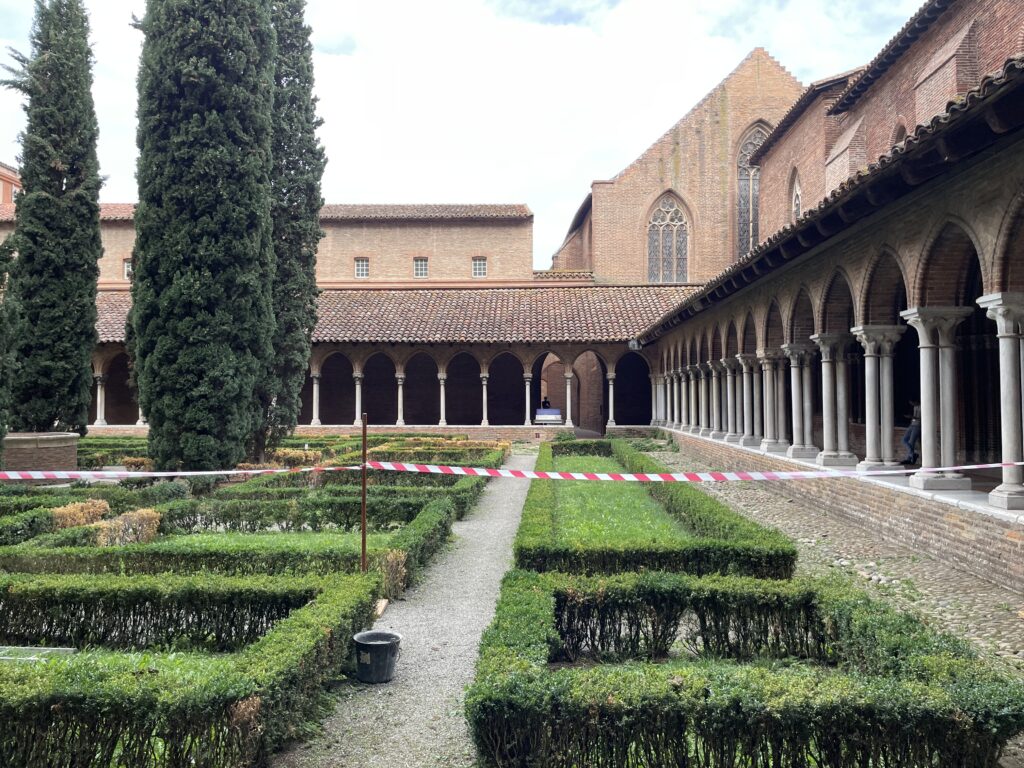Toulouse is a very beautiful, original city in the south of France, with well-preserved medieval architecture, a large river Garonne with picturesque embankments and bridges, navigable canals, beautiful parks, churches, monasteries and museums. Tourists from all over the world come here to walk along the ancient winding narrow streets, visit ancient cathedrals, sit in cafes, look in magnificent stores of French wines, cheeses and sweets.
Here we have collected some sights and routes in Toulouse that may be useful for you on your day off, as well as on other days, in your free time. We think that walking around Toulouse is a separate and important part of our “dialogs”. It is a dialog with the city that will be our habitat for these seven days. To make it easier for you to navigate, we have linked all the places to Google Maps and will also give their French names to make it easier for you to find them.
Parks and promenades
Japanese garden
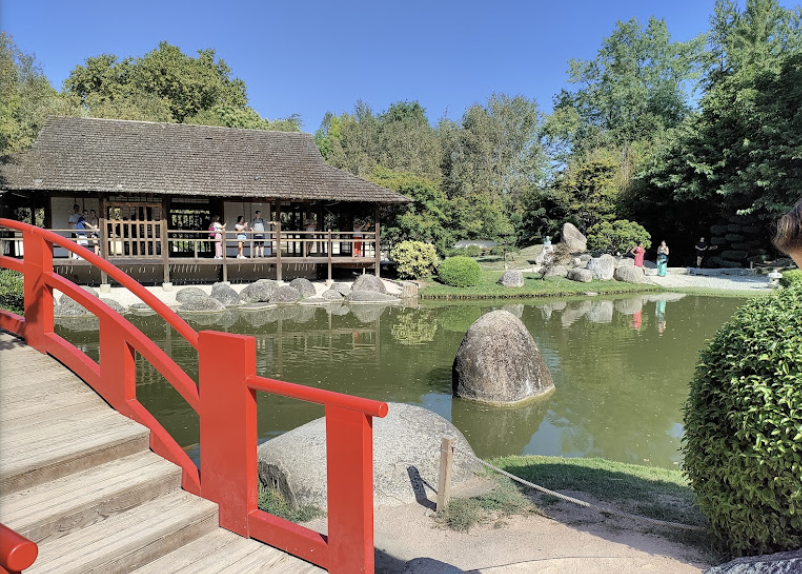
Not far from the place where our event will take place is the Japanese Garden (French: Jardin Japonais, English: Japanese garden). This is a small cozy park where you can walk along paths and bridges, look at carp in the pond and meditate in a Japanese gazebo. This park is located in another large park, where there is a small sports ground with table tennis tables, a lake, a fountain and… a bust of Taras Shevchenko.
Address: Jardin Compans Caffarelli, Bd Lascrosses, 31000 Toulouse
Directions: Metro line B, Compans Caffarelli station.
Botanical Garden
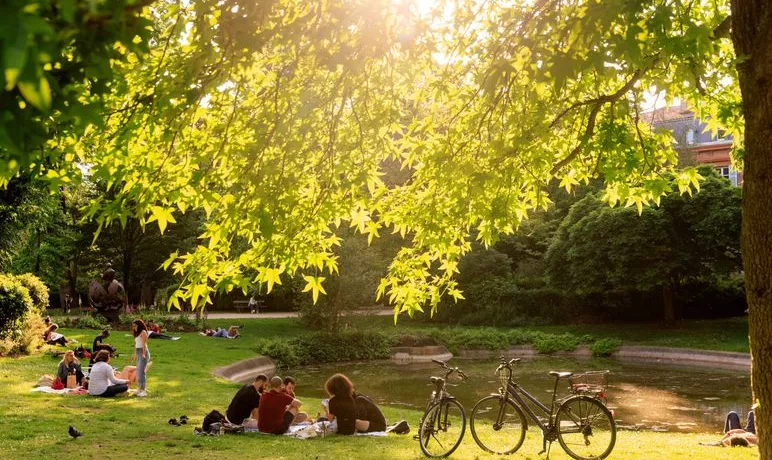
The Botanical Garden (French: Jardin des Plantes, English: Garden of plants) was founded in 1730, and in 1808, by decree of Napoleon Bonaparte, the garden became the property of the city and was opened to the public. Within the park is the Museum of Natural History of Toulouse. There are about a hundred botanical species in the park. It has a lake with ducklings, roosters and chickens run freely in the park. The park adjoins two other parks across the road: the Jardin Royal and the Grand Rond. This is a great place to walk along the shady alleys on a hot day, sit on the grass, maybe even eat traditional French chestnuts, which are sold from stalls.
Address: 31 All.
Jules Guesde, 31400 Toulouse
Directions: metro line B Carmes or Palais de Justice station.
A walk along the canals
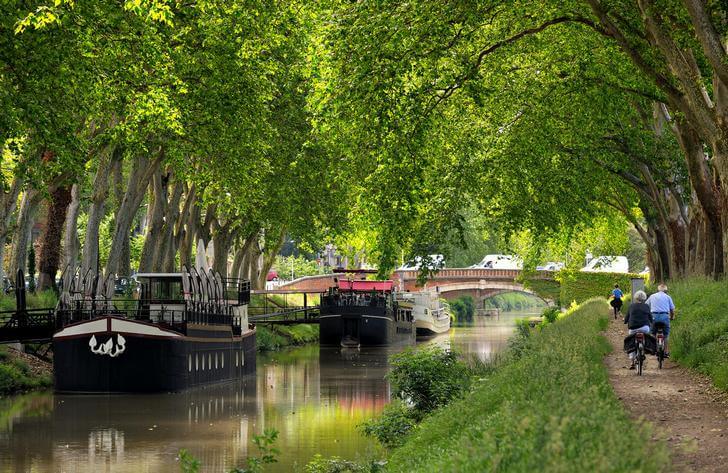
Toulouse stands on the great Garonne River, which flows northwestward into the Atlantic Ocean near the city of Bordeaux.
This and other rivers, connected by canals and locks, form a gigantic transportation system that in past centuries pervaded practically the whole of France.
Rivers and canals can still be used to pass from the Atlantic Ocean to the Mediterranean Sea via Toulouse.
The canals of Toulouse are ancient arteries that girdle the city.
Some of them are very picturesque, with manned barges on them, and along the banks there are walkways running under bridges – all in the shade of huge plane trees.
You can start your walk along the Southern Canal (fr. Canal du midi), which is just north of the Japanese Garden.
You can walk west along it and come to the Ponts Jumeaux.
From there you can walk back along the Canal de Brienne to the point where the canal meets the Garonne via a lock near Place Saint-Pierre.
Here you have a view of the Garonne, the waterfront, and the Pont Saint-Pierre bridge.
From here you can continue your walk along the Garonne along the promenade, or visit the nearby Jacobean monastery or head towards the Capitole.
Directions: Metro line B, Canal du Midi station.
Garonne Quay and New Bridge
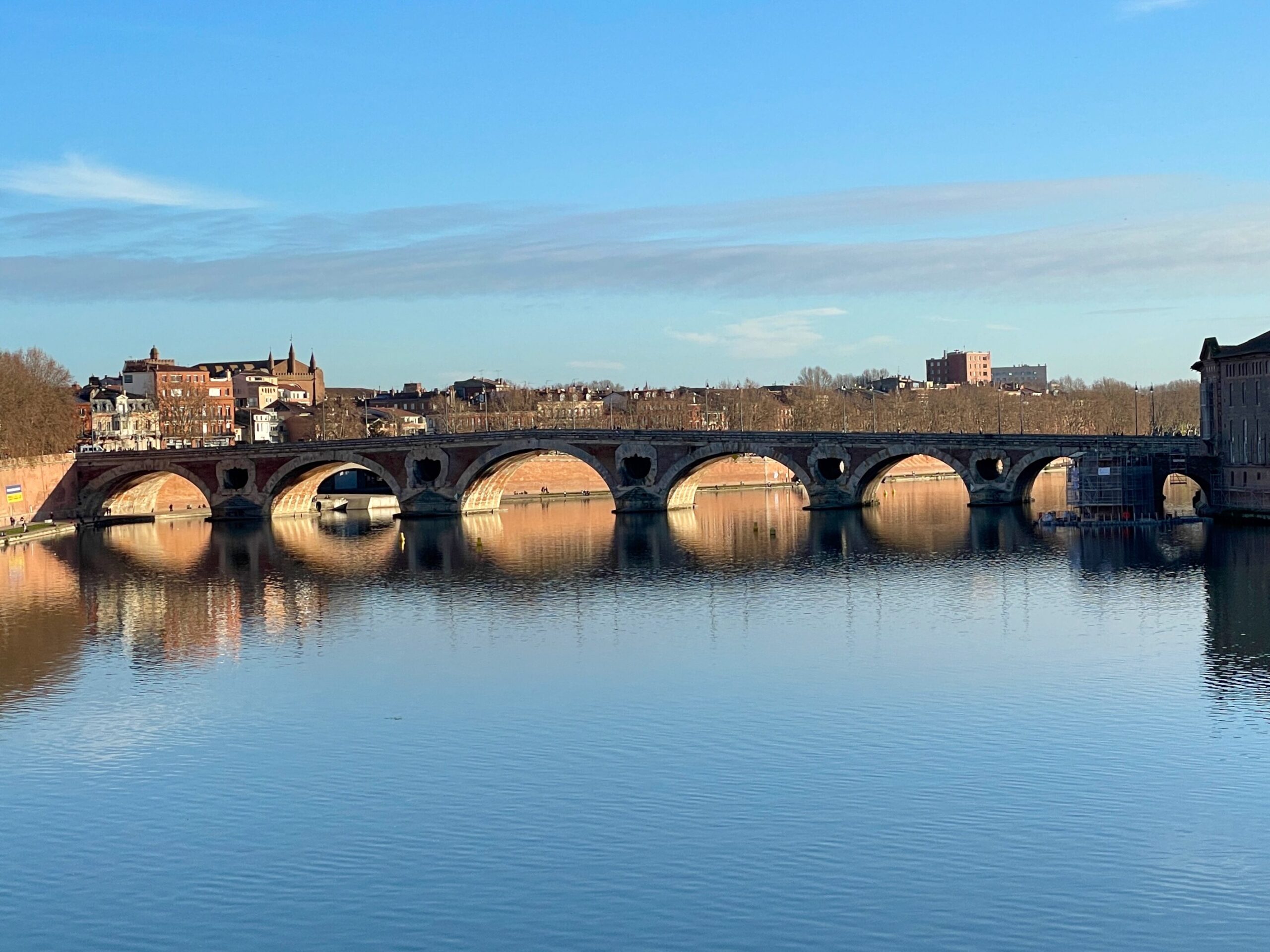
Between the Pont Saint-Pierre and the Pont Neuf, which is actually, contrary to its name, one of the oldest bridges in Toulouse, is the Promenade Henri Martin. Along the way you will come across the old Port de la Daurade and the Basilique Notre Dame la Daurade.
From there you can continue beyond the New Bridge to the Rue Quai de Tounis, to see the massive gates that lock the lower part of the city from floods and the Garonnet River. If you follow the Rue de Pont de Tounis, you will come to the ancient Notre-Dame de la Dalbade cathedral and from there you will continue into the tangle of narrow streets of the Carmes district.
How to get there: the quickest way to the Saint-Pierre Bridge is from the Capitole (metro station Capitole on line A) along the old Rue Pargaminières. The closest way to the New Bridge is Esquirol metro station on the A line).
Old Town
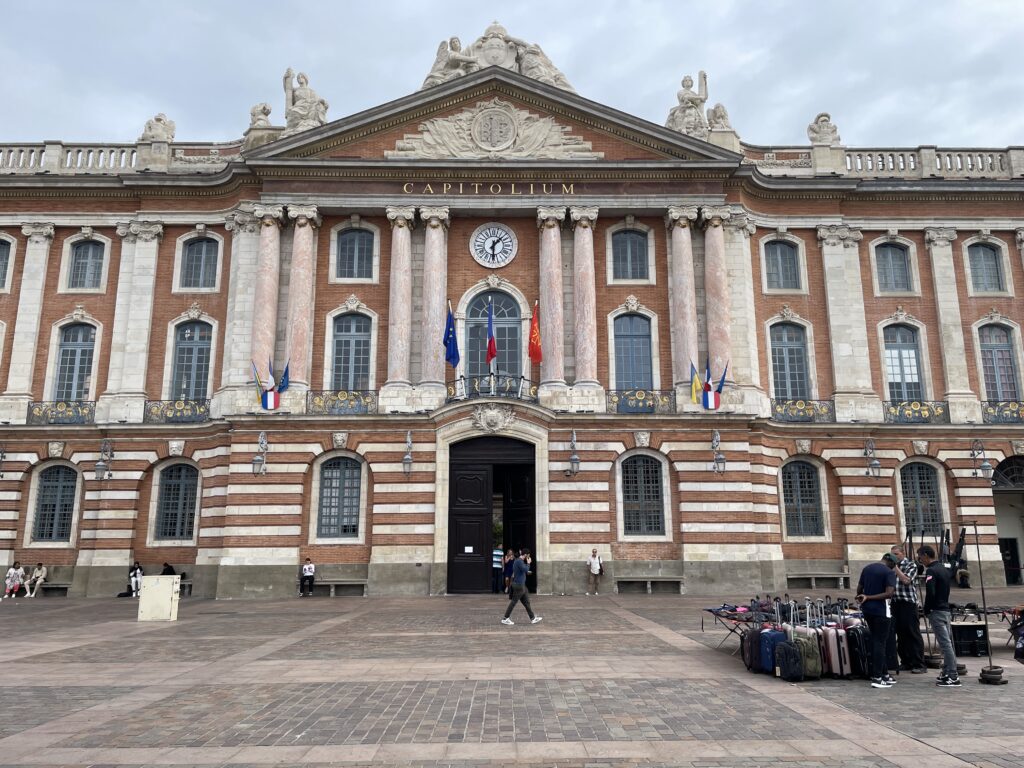
The old quarters of Toulouse are roughly squared between the Botanical Gardens to the south, the Garonne to the west, the Basilica of St. Sernin to the north and the Boulevard Carnot to the east. The most picturesque streets are in the Carmes neighborhood. We highly recommend walking along the rue Théodore Ozenne, the rue du Languedoc, the Carmes market (located right at the Carmes metro exit on line B) and the surrounding streets, where you will find many cheese and wine shops.
From there, you can walk up Rue du Languedoc to the pedestrian shopping street Rue d’Alsace Lorraine and follow it to the Capitole (Place du Capitole). It is recommended to twist and turn through the adjoining old streets and wander through the maze of the “pink city”.
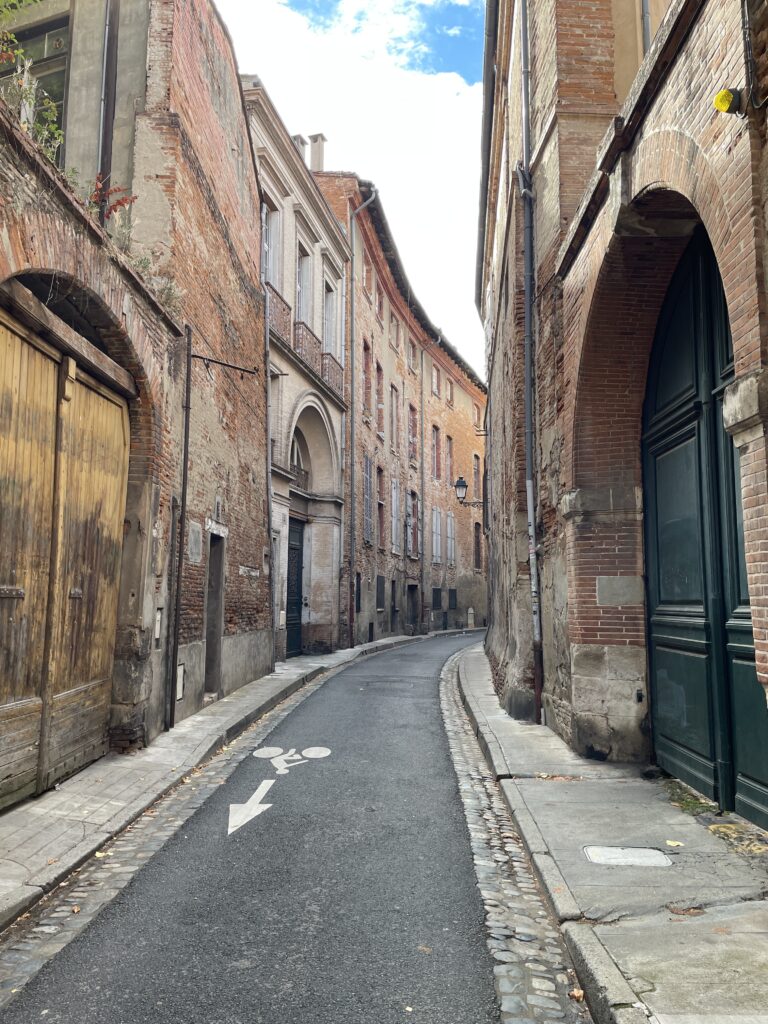
We recommend going into the Capitol building itself (Toulouse City Council) and enjoy the entourage and the collection of paintings. Entrance to the Capitol is free.
Further north east of the Capitol is the Victor Hugo Market. Here you can see the French buying and eating oysters with wine. The market has a huge selection of seafood, cheeses, wines, and honeys. (Keep in mind that the market is open all days except Monday and only until 14:00, so you should plan to go there in the morning.)
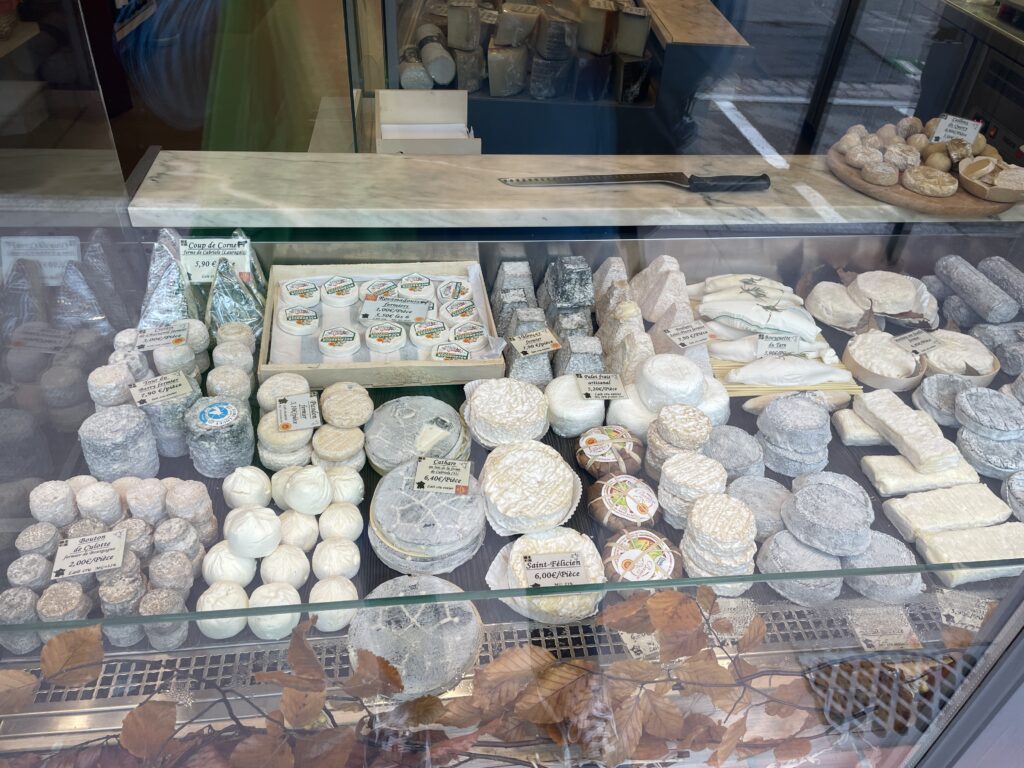
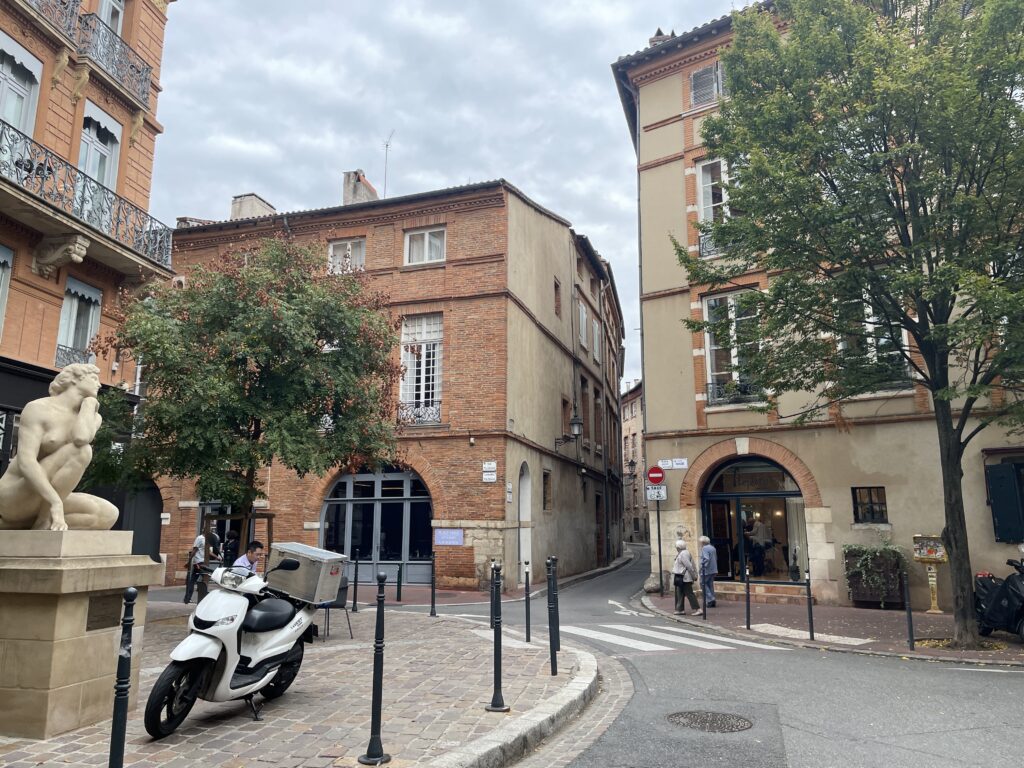
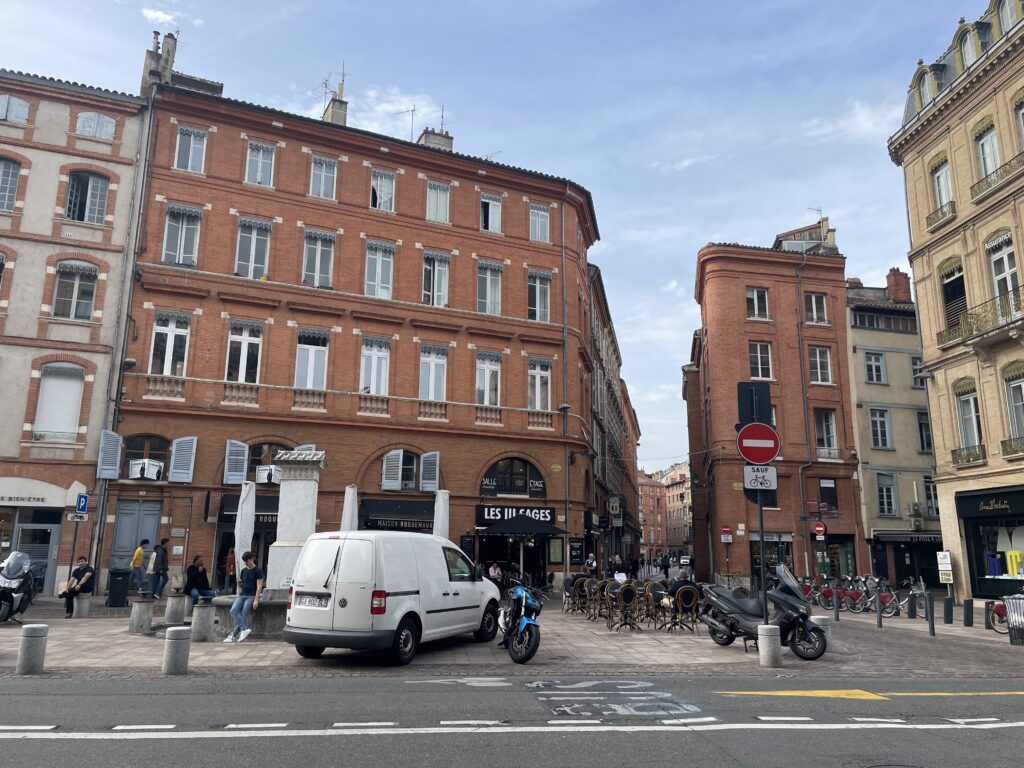
Cathedrals and monasteries
Jacobins Convent / Couvent des Jacobins
Perhaps one of the most interesting temples in Toulouse, where we highly recommend a visit.
The building is built in the Gothic style.
Inside, there are stunning stained glass windows and arches propping up the ceiling.
Interestingly, this monastery houses the remains of Thomas Aquinas, although he himself did not live in Toulouse, but the Pope gave his remains to this monastery for his great success in overcoming the Cathar heresy (the history of the cruel fight against the Cathar heretics is a separate big chapter in the history of Toulouse and the neighboring city of Albi – may interest those who are interested in the history of religion).
The square courtyard and the meditation promenade that encircles it are a must-see.
How to find it: it is located near the Saint-Pierre Bridge. nearest metro Capitole on line A.
Basilique St-Sernin / Basilique St-Sernin
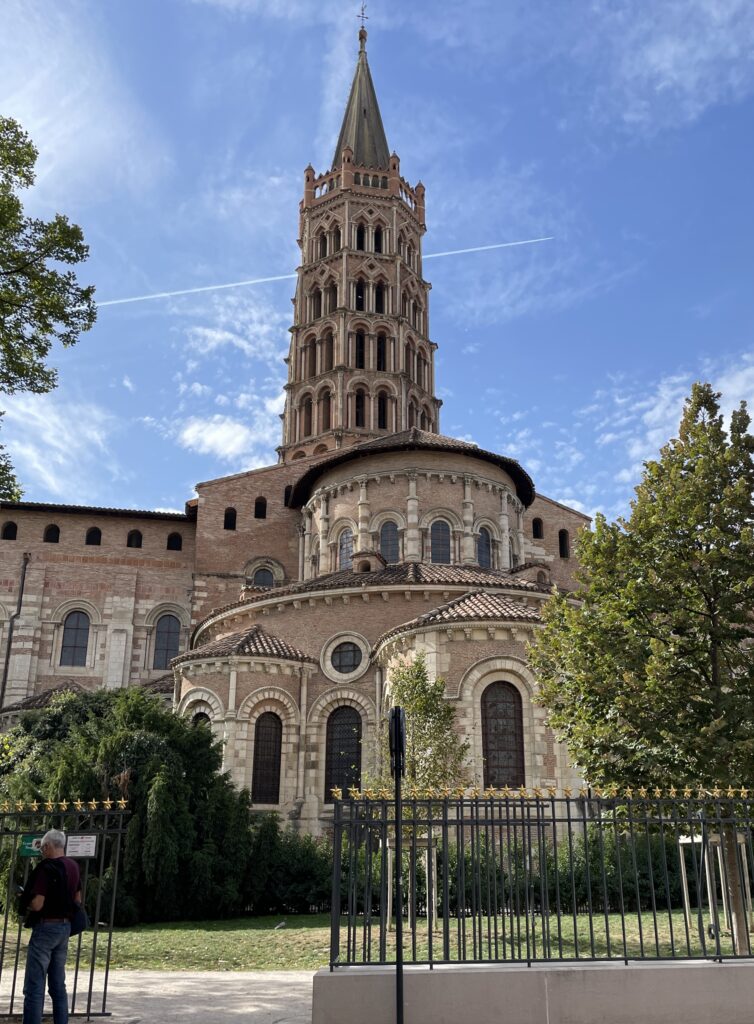
Basilique St-Sernin is a well-preserved Romanesque church. The gigantic octagonal bell tower is amazing. The entire basilica is built of pink-colored bricks and white stone.
The church houses the relics of St. Saturninus (also known as St. Sernin), the first bishop of Toulouse, who was martyred by pagans. The relics of St. Saturninus (also known as St. Sernin), the first bishop of Toulouse, who was martyred by pagans.
How to find: located north of the Capitol. The nearest metro is Jeanne d’Arc on the B line.
Cathédrale Saint-Étienne / Cathédrale Saint-Étienne
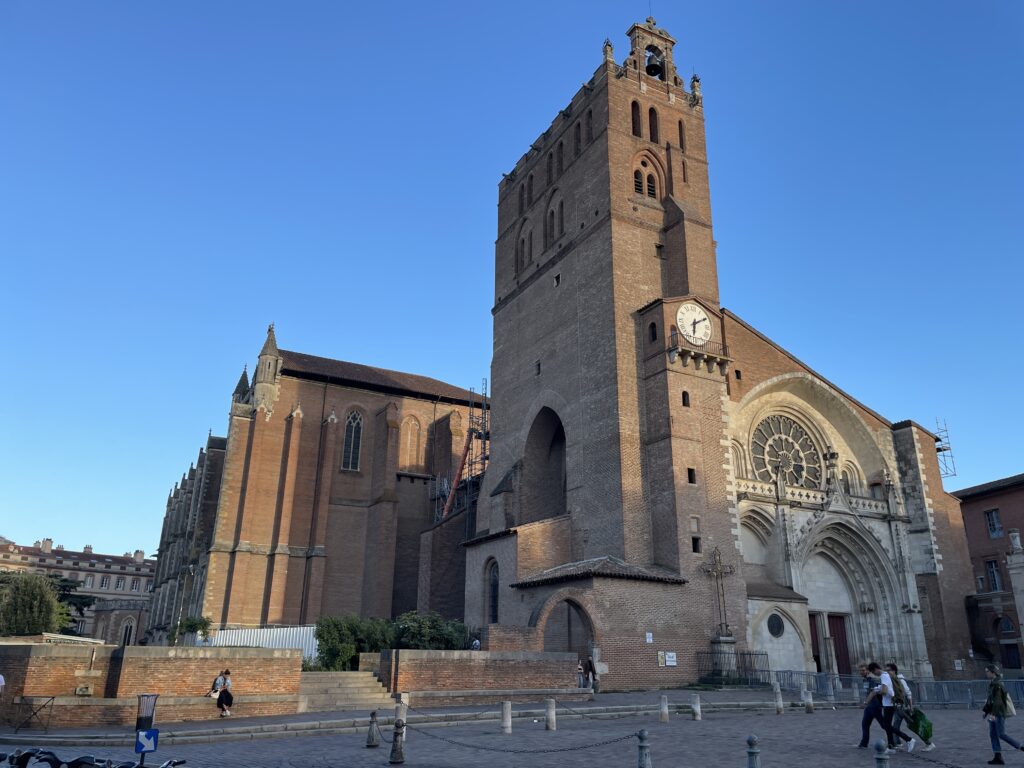
This city cathedral was built over more than one century – from the 12th to the 13th century. It is notable for its magnificent “Gothic Rose” – a large round stained glass window above the entrance.
How to find it: it is located near the François Verdier metro station on line B.
Museums
Museum of Toulouse / Muséum de Toulouse
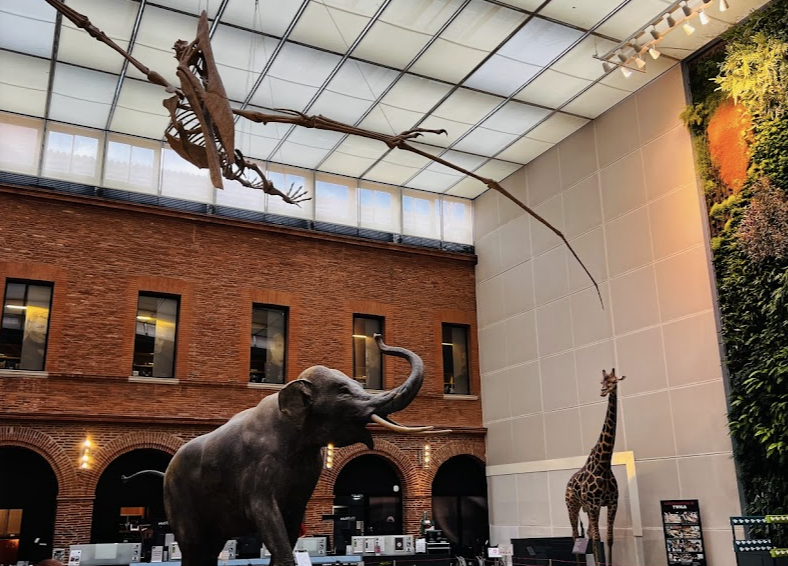
Museum of Natural History, which was established at the end of the XVIII century thanks to the efforts of naturalist Jean-François de La Perouse on the territory of a former monastery.
The museum is right in the Botanical Gardens, it has a nice souvenir store and a very nice cafe in the bamboo grove.
It is a huge museum with a large number of halls and exhibits on an area of several thousand square meters. Here you can see all sorts of skeletons, stuffed animals, minerals, etc. Perhaps it may be more interesting to the younger generation.
How to get there: the nearest metro stations are Palais de Justice or Carmes on the B line.
Musée Saint-Raymond / Musée Saint-Raymond
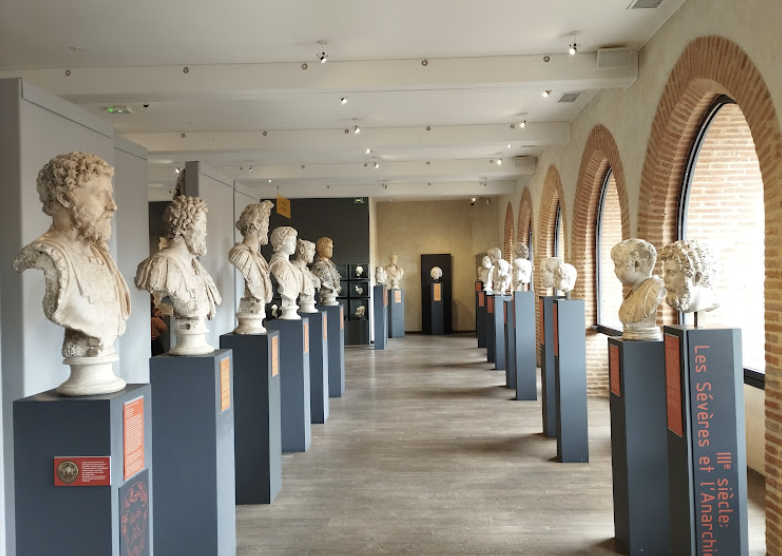
The Saint-Reymond Museum is located near the Basilica of Saint-Sernin in a historic 16th century building. The museum is dedicated to the history of Toulouse.
Exhibits found in excavations around the city are on display here. The collection consists of jewelry, bas-reliefs, coins, bronzeware, and other historical artifacts.
How to find: located north of the Capitol. The nearest metro is Jeanne d’Arc on the B line.
Les Abattoirs Museum of Contemporary Art
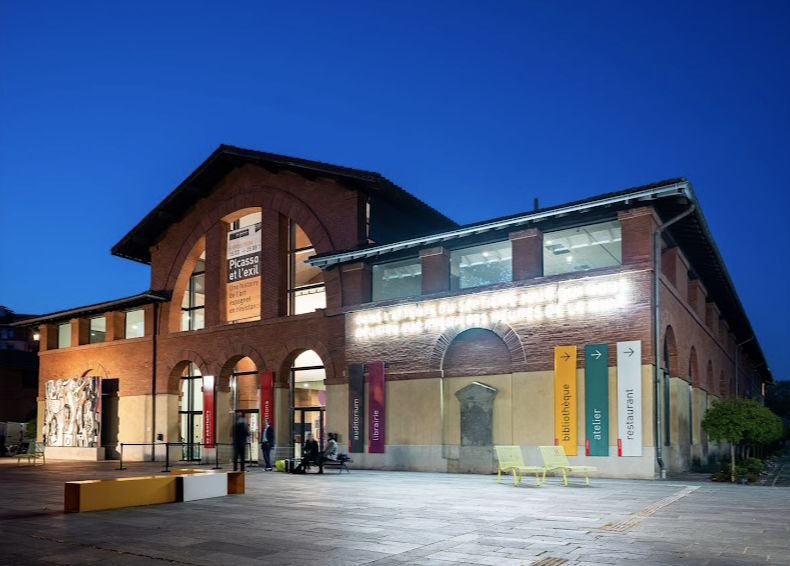
The museum was established on the site of the former slaughterhouses of the first half of the 19th century. This fact is reflected in the title of the gallery. Despite its short history, Les Abattoirs is already called one of the best contemporary art museums in France. The collection is a collection of sculptures, drawings, paintings, photographs and installations that were created between the 20th and 21st centuries.
A visit to this museum is also a good excuse to cross to the left bank of the Garonne and also to visit the small botanical garden of Raymond VI (Jardin Raymond VI).
How to get there: the nearest metro station is Saint Cyprien – République on line A.
Space City Park / Cité de l’Espace
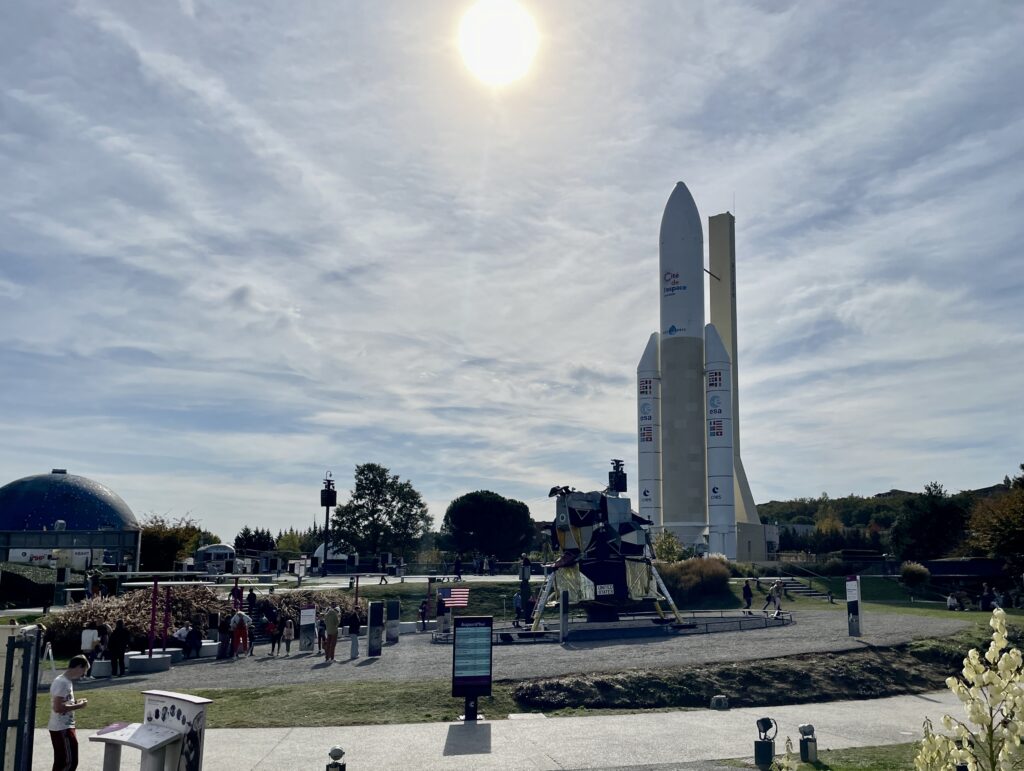
The park was created in 1997 near the space center of Toulouse on the initiative of the city authorities and with the support of the French government. Models of space engines, satellites, rockets and ships are placed on the museum grounds.
At the museum, you’ll see full-scale replicas of iconic spacecraft, including the Mir space station and the 52-meter Ariane 5 launch vehicle.
The park is located in the southeastern part of the city, far enough away from the center. You can only get there by bus.
Address: Cité de l’espace, Avenue Jean Gonord
